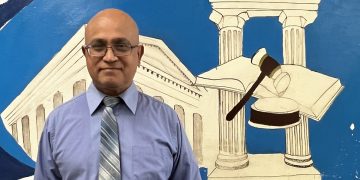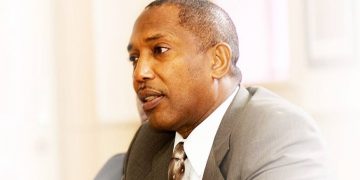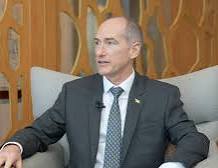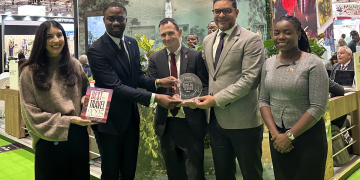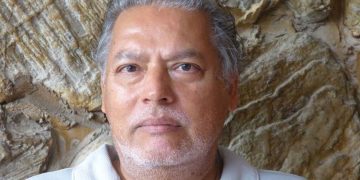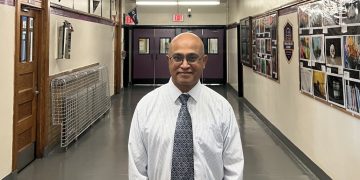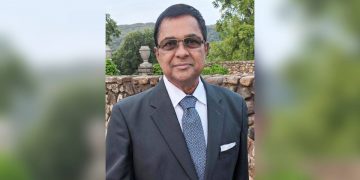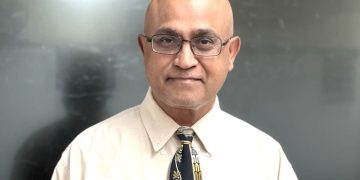Our small Hindu community is in decline with limited if no creative ideas to move it along new paths. The projects that are implemented are repetitive and kept limping long after they have lost their vigor and relevance.
Hinduism in Trinidad is steeped in 19th-century practices brought by our ancestors. Much of what is done is not rooted in any scriptural and philosophical rational but steeped in what was passed on from generation to generation. For example, is much of the religious paraphernalia used in our funeral rites relevant today? They may be, but is there any rational explanation to justify those rites?
Contemporary issues are not being addressed in the community, among them being life style diseases such as diabetes, renal failure and heart diseases; poverty, conversion, addictions, single-parenthood and creolization to name a few. If these major direct and indirect threats are not being addressed, then we are courting a slow but steady decline and end to our existence.
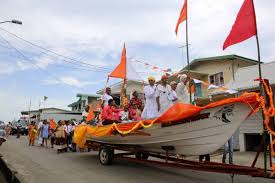 In Martinique, Guadeloupe, Grenada and Jamaica the Indians ‘community’ have all been decimated not only culturally but also genetically. In areas such as the western peninsula of Trinidad, the Indians, being a minority, are marginalized if not near extinction.
In Martinique, Guadeloupe, Grenada and Jamaica the Indians ‘community’ have all been decimated not only culturally but also genetically. In areas such as the western peninsula of Trinidad, the Indians, being a minority, are marginalized if not near extinction.
In the heart land of the community such as Chaguanas, Debe/Penal and Gasparillo/Williamsville there are significant numbers of converts to the Pentecostal Church. Despite this decline, the leadership so far has not put forward an ‘answer back’. It is as if the descendant of Adi Shankara and Swami Dayannada and the brothers and sisters of Swami Vivekananda were not among the travelers in the fated Fatal Rozack. Where are the Maharajas?
A few years ago, a Hindu conference was held at the Divali Nagar. Among the conveners were Deoroop Teemal and Dharmacharaya, Pandit Rampersad Parasram. I participated in the conference and was hoping that it would be an annual event. Nevertheless, to date that has been pushed to the background as most organizations and mandirs are busy with their own side shows with limited time to get together. The reality is that they have no bridge to build to rescue a Sita kidnapped by a Ravana! Maybe they view everything as hunky-dory!
 The development of Indian Arrival Day (May 30) was a pathfinder, thanks to the Hindu Seva Sangh. The late Ramdath Jagessar and his small Indian Arrival Day Committee initiated this event and, in the enthusiasm to make it popular shared it to the Maha Sabha in 1979. Later, the Hindu Seva Sangh took the celebration to the villages and the far corners of the country – Cedros, Penal, California, Couva, Moruga, Aranguez, Gasparillo, Couva, Valsayn, Sangre Grande, Princes Town etc.
The development of Indian Arrival Day (May 30) was a pathfinder, thanks to the Hindu Seva Sangh. The late Ramdath Jagessar and his small Indian Arrival Day Committee initiated this event and, in the enthusiasm to make it popular shared it to the Maha Sabha in 1979. Later, the Hindu Seva Sangh took the celebration to the villages and the far corners of the country – Cedros, Penal, California, Couva, Moruga, Aranguez, Gasparillo, Couva, Valsayn, Sangre Grande, Princes Town etc.
As the popularity and relevance of this historical event grew, others such as the UNC parliamentarians – Trevor Sudama and Raymond Pallacdharrysingh – pioneered motions and debates in Parliament for India Arrival Day (May 30) to be declared a national holiday.
Indian Arrival Day (May 30) was a historical day in the calendar waiting to be discovered and popularized. It demanded hard work. Numerous landings of the Fatal Rozak were re-enacted at the fishing ports of Cedros, Moruga, Orange Valley, Felicity etc. with the cooperation of the local fishermen, followed by street processions and cultural concerts.
The effort to popularize Indian Arrival Day began in 1978 and went on to 1995 when it was declared a public holiday- eighteen long years. Unfortunately, our leaders today are eager to get results in 28 to 35 days, the gestation period for rabbits! It is this fixation and obsession with rapid results that is finding the community, if not stand still, in reverse gear. However much we may quote the Bhagavad Gita that we must work without looking out for results, we seem bent on immediate gratification. (Had many of our Hindu leaders participated in the famous marshmallow test, they would have gobbled all their marshmallows!)
Narendra Modi’s government is not just the Pranprathistha of the Ramlala idol but the transformation of India in every manner possible -infrastructure, education, national security, women’s rights etc. Fortunately, in this twin-island republic, our leaders can get the result by just repetition – reading the Ramayana night after night and chanting the Hanuman Chalisa.
Ram was a man of action. He never ran away from situations but dealt with them head on. More than that, Ram formed alliances with others to win his battles. This, unfortunately, is a lesson our Hindu leaders and Maharajas don’t bother to appreciate. They have adopted the modus operandi of Ravana- going it alone with arrogance, not wisdom as their choice of fuel.
Ramdath Jagessar’s first death anniversary is on the 30th April and the Hindu Seva Sangh will be holding a Satsangh to reflect on his pioneering work. Haripersad Harikissoon, the founder and President of the Seva Sangh, is ailing but his contribution toward making Indian Arrival Day will always be remembered. Mungal Chattergoon, Ramsewak Ramphalie, Kamal Persad, Ashram Maharaj and Moze were no less. Definitely, these sons were not rabbit breeders!














